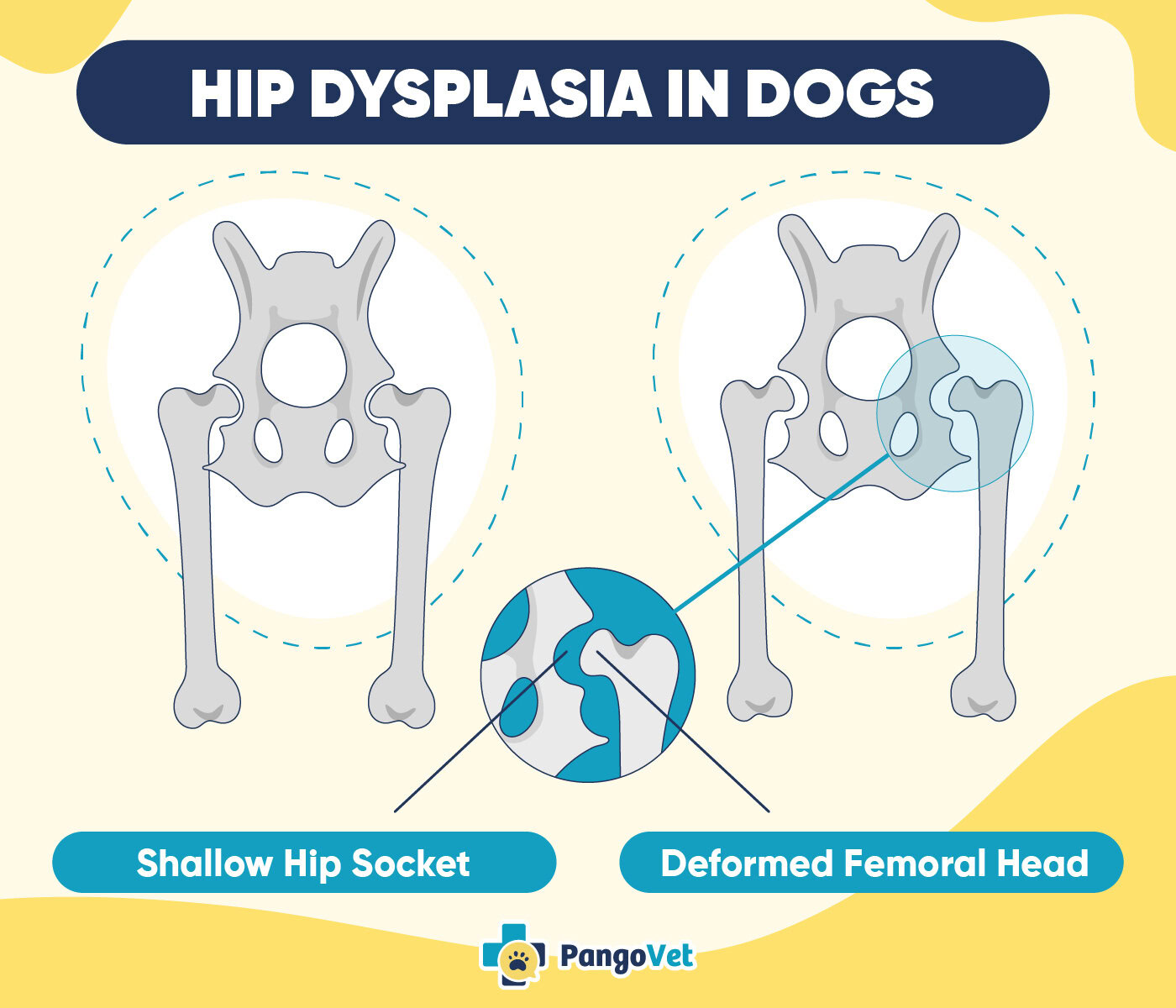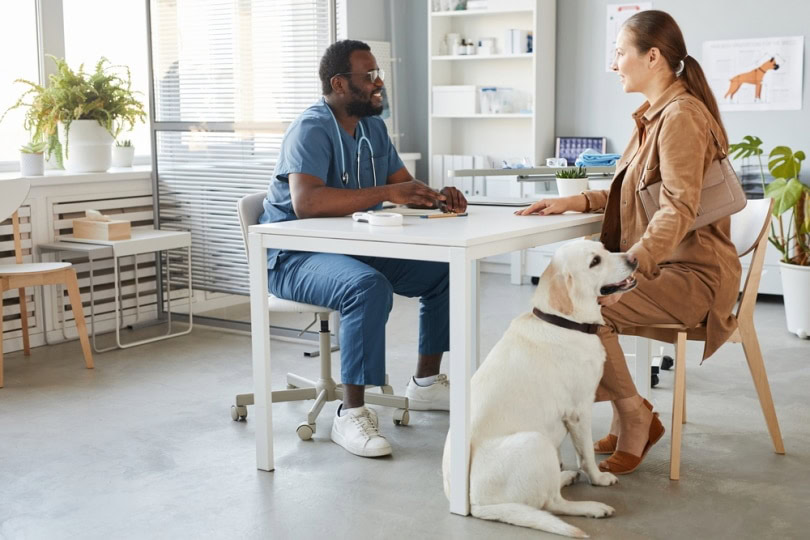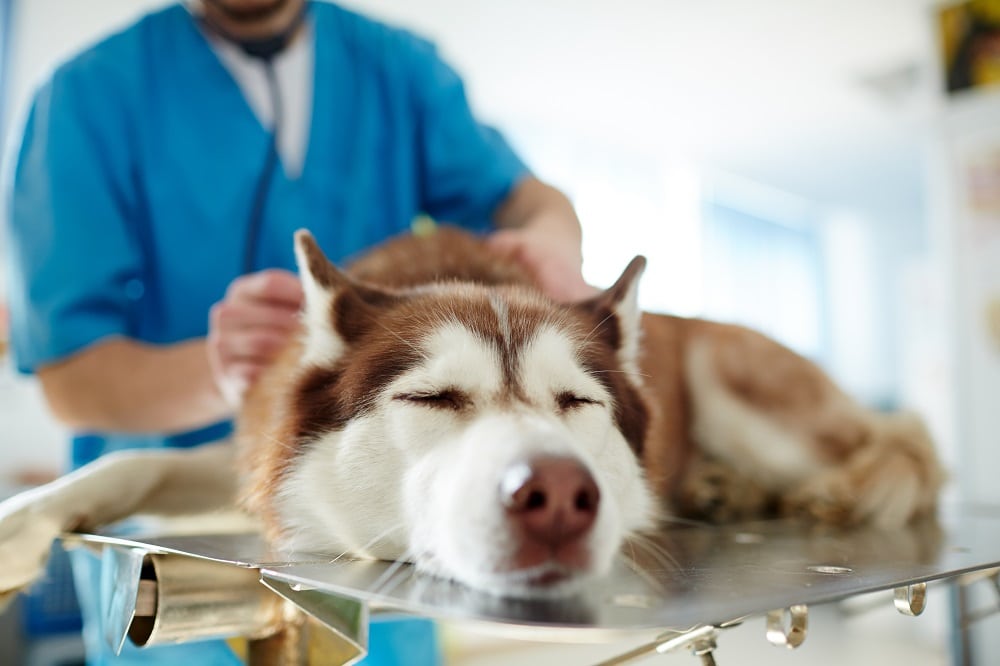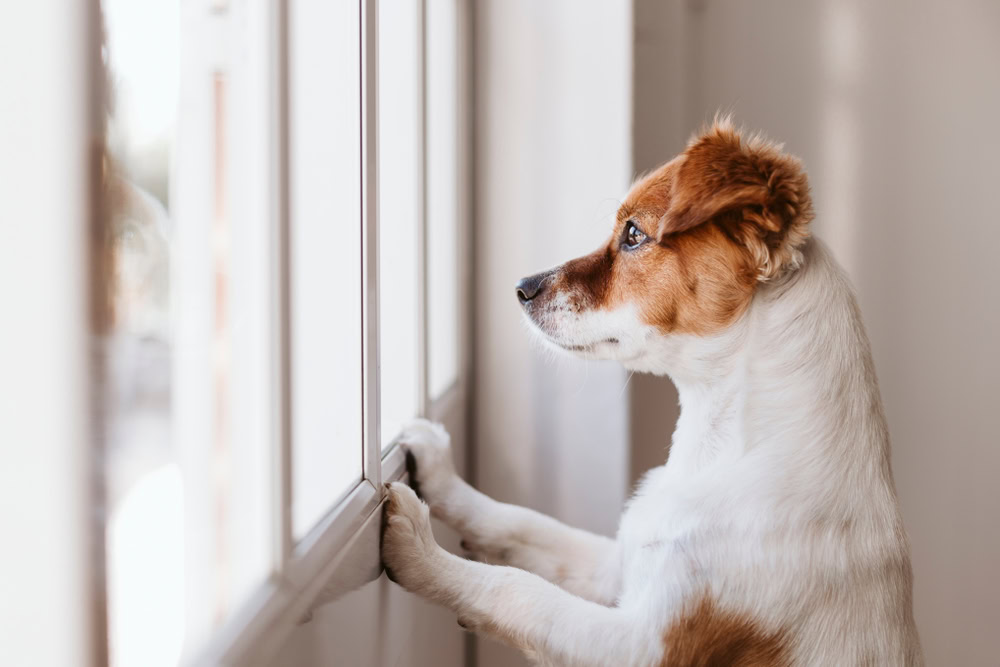VET APPROVED

The information is current and up-to-date in accordance with the latest veterinarian research.
Learn more »Click to Skip Ahead
Hip dysplasia is a deformity of the hip that happens while the dog is growing in puppyhood. The hip joint is made up of a ball and a socket. During puppyhood, these two parts must grow in the same proportion. However, there are many factors that can mess with this rate. For instance, overconsumption of calories can cause the puppy to grow too quickly, which can upset the balance of the hip joint.
This unevenness results in inappropriate wear and tear. Eventually, the joint will start to become loose. Osteoarthritis and degenerative joint disease may occur as the body attempts to stabilize the hip joint. Usually, this disorder results in pain and lameness. However, the extent of the lameness depends largely on the extent of the arthritic changes. It doesn’t always necessarily correlate with the appearance of the joint on X-rays.
Some dogs have minor changes but are affected very heavily. Others have very bad X-rays but don’t appear to be very affected at all.

What is the Cause of Hip Dysplasia?
Hip dysplasia is caused by a variety of different factors. Some dogs are genetically1 predisposed to it. Larger breeds seem to have the most problems, but technically any breed can be affected. Certain environmental, exercise, growth, and hormone factors do play a role in this disease.
Puppies should be kept at a normal, lean weight. If they consume too many calories, they may become overweight, which can cause hip dysplasia. You should not feed your puppy based on how hungry they are, as this isn’t always an accurate estimate of their caloric needs.
Studies have found that puppies who are fed as much as they want to eat have a higher risk of developing hip dysplasia2. On the other hand, fewer puppies that were fed measured meals developed hip dysplasia.
Larger breed dogs should be fed large-breed-specific dog food. This is specifically formulated for larger dogs, so it provides the more exact nutrition they need to grow properly.

What Breeds Are Most Affected by Hip Dysplasia?
Large and giant breeds are more likely to be affected. This includes dog breeds like German Shepherds, Labrador Retrievers, Saint Bernards, Old English Sheepdogs, Golden Retrievers, and Bulldogs. These dogs should be fed a complete and balanced diet through the first year and possibly longer.
Signs of Hip Dysplasia
Weakness and pain are the most common signs of hip dysplasia. Usually, the dog will be reluctant to use the leg. They may not want to rise from a sitting and lying position. Many dogs will limp and occasionally be reluctant to climb stairs.
Puppies may exhibit these signs when they are a few months old. Other times, the dogs only show signs when they are older, after the joints have had time to wear down substantially. Often, hip dysplasia develops when the dog is a puppy, but they don’t necessarily show signs until much later.

Hip Dysplasia Diagnosis
A hip radiograph is usually used to diagnose hip dysplasia. However, the actual signs the dog has don’t always line up with a hip x-ray. Clinical signs like pain and limping alongside X-rays can usually be used to diagnose this disorder.

Hip Dysplasia Treatments

Treatment varies considerably depending on the severity of the condition, as well as what seems to help the dog. Often, NSAIDs (anti-inflammatories) and other painkillers are extremely effective and usually the first choice for treatment. They may have side effects in some dogs, and your vet will recommend the most appropriate treatment. However, multiple drugs may need to be tried out before one that is particularly effective is found. Dosages often need to be changed to find one that works best for the dog. As the dog ages, these medications may need to be changed, so regular vet visits are required.
On top of hip dysplasia, many dogs should also receive glucosamine, chondroitin sulfate, and omega-3 fatty acids supplementation. These have been shown to help dogs with hip dysplasia and are often recommended by the vet.
Lifestyle changes may be necessary as well. For instance, high-impact activities should be avoided. This includes jumping and similar activities. Some dogs may need to avoid stairs, though this can be difficult in some homes. However, moderate activity is often recommended to strengthen the joints. Physical therapy is often recommended and can greatly improve your dog’s quality of life. Typically, younger dogs benefit most from physical therapy.
The alternative option is surgery for patients that remain in pain despite all the medical treatment options. They are expensive and often just as good as other options. The choice of surgery will depend on your pet’s age and other factors. Speak to your vet about treatment options for your dog.
There are many alternative therapies as well, including acupuncture and stem cell treatments. However, these are not widely available, are often expensive, and have not yet been thoroughly tested by science. Therefore, they are not widely used by most vets.

Conclusion
Hopefully, this article has shed some light on hip dysplasia in dogs. If your dog is a breed at risk or has been diagnosed with hip dysplasia, it’s important to follow your vet’s advice and get them checked out regularly to make sure they are comfortable and coping well with this disorder. Some dogs may go through life without needing much treatment, while others will benefit from surgery or will require lifelong, possibly daily, medication.
Related Reads:
- https://vcahospitals.com/know-your-pet/hip-dysplasia-in-dogs
- https://www.akc.org/expert-advice/health/hip-dysplasia-in-dogs/
- https://www.pdsa.org.uk/pet-help-and-advice/pet-health-hub/conditions/hip-dysplasia-in-dogs
- https://www.petmd.com/dog/conditions/musculoskeletal/c_dg_hip_dysplasia
- https://www.acvs.org/small-animal/canine-hip-dysplasia/
- https://www.ufaw.org.uk/dogs/golden-retriever-hip-dysplasia
- https://ofa.org/diseases/disease-statistics/
- https://pubmed.ncbi.nlm.nih.gov/15702688/
- https://www.morrisanimalfoundation.org/article/hip-dysplasia-in-dogs
- https://www.aaha.org/publications/newstat/articles/2021-03/1600-dogs-shed-new-light-on-the-genetic-origins-of-canine-hip-dysplasia/
- https://www.vssoc.com/services/pennhip-screening/
- https://europepmc.org/article/med/9154200
- https://avmajournals.avma.org/doi/abs/10.2460/javma.2001.219.1719
- https://www.rvc.ac.uk/static/newsletter/eclipse/2019/index.html#p=26
Featured Image Credit: Pressmaster, Shutterstock












